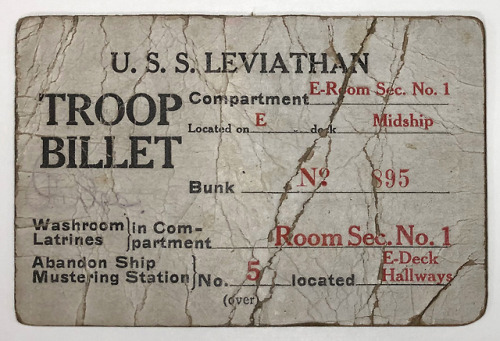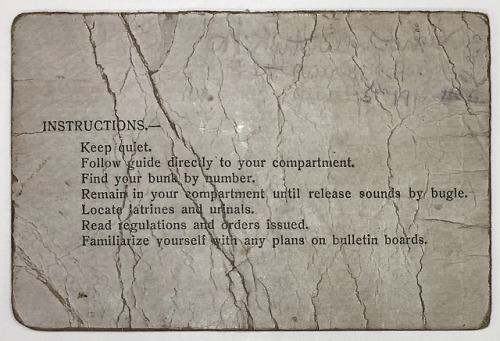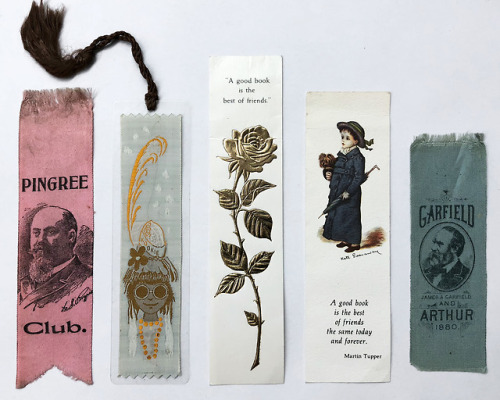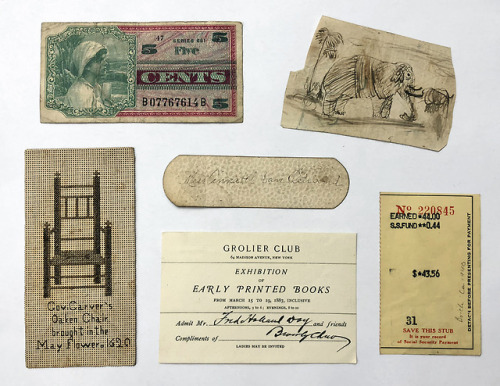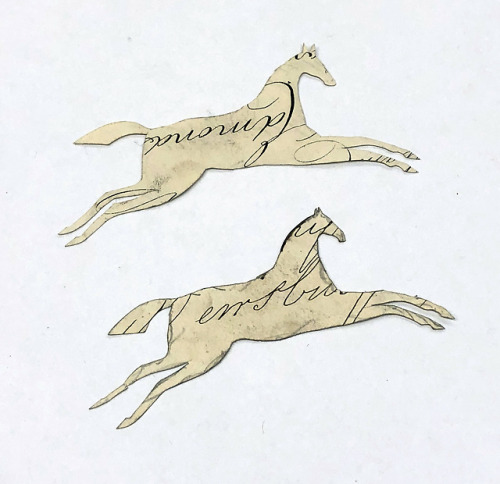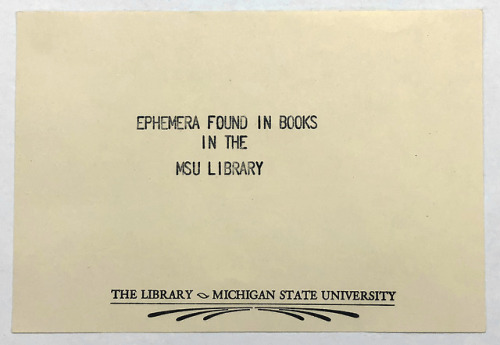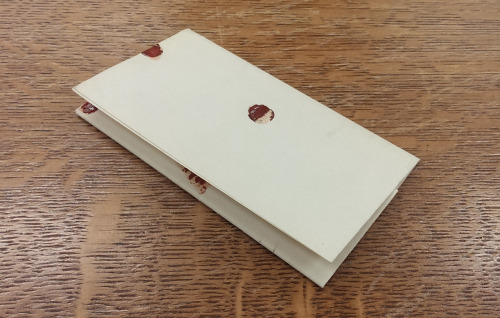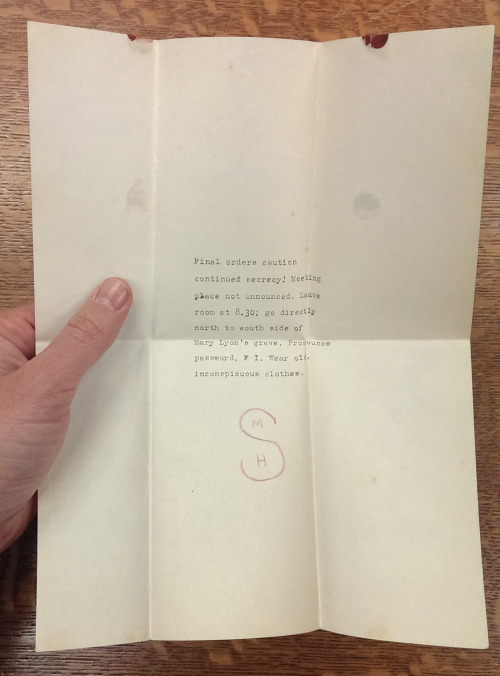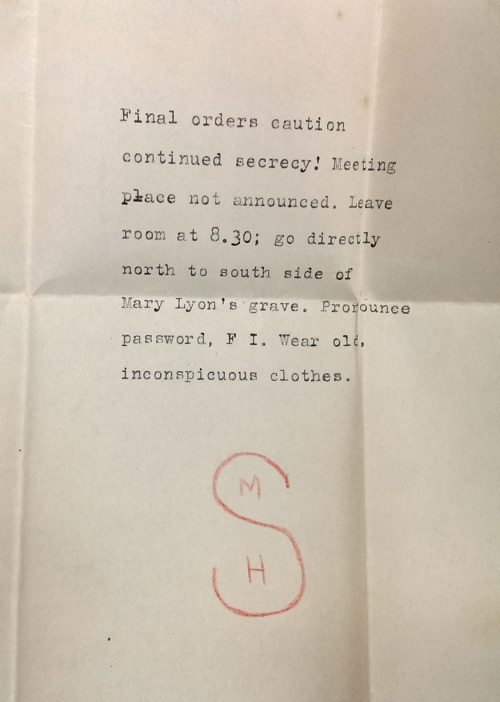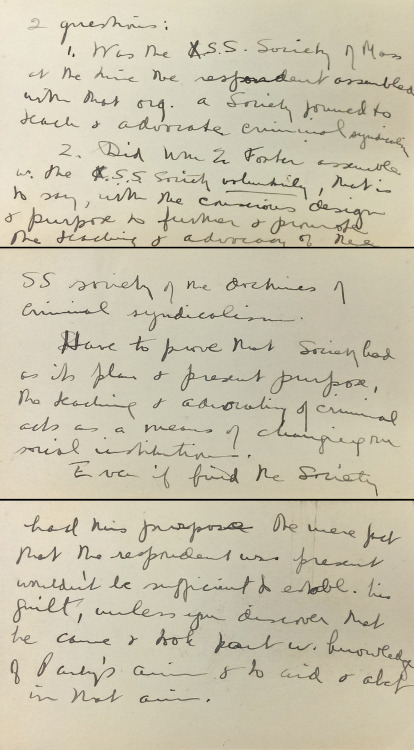#found in a book
More highlights from our file of “Things Found in Library Books!”
One interesting piece from this collection of orphaned ephemera is a troop billet card for the U.S.S. Leviathan, a massive German-built steamship seized by the United States in 1917 and used as a troop transport during World War I. While we can’t quite make out the name penciled on the back of the card, we can (just barely) read the annotation below, which allows us to date this particular voyage:
Left New York Harbor
June 15th 1918
Can anyone read the name of the soldier in bunk #895? While we can’t say for sure if the former owner of this card made it home from the War, the fact that the card survived gives us some hope.
During its tenure as a military transport, the Leviathan ferried over 119,000 American troops between the United States and Europe. After the War ended, the ship was refitted again to serve as a passenger liner for the United States Lines, and continued to sail across the Atlantic for another 20 years.
Post link
There’s a lot more to studying provenance than deciphering arcane inscriptions and other marks of ownership. Sometimes previous owners will leave other traces of themselves behind, like these loose items we’ve found stuck between the pages of many of our old books.
These pieces of ephemera, or transitory materials originally meant to be discarded after a few uses, have survived against all odds — in some cases for over 100 years — as forgotten bookmarks, safely tucked away and waiting for our librarians or catalogers to stumble across them.
Unfortunately, these particular ephemera are orphaned materials, their original sources unknown or undocumented. Where they might have come from, what books they were originally found in — these remain mysteries that we will probably never solve. But while their usefulness as pieces of provenance evidence is likely nonexistent, these fragile, rarely-preserved fragments of another time and place are still interesting in their own right.
Post link
In addition to documenting marks of ownership and marks of use in our rare books, here at the MSU Provenance Project we also catalog loose ephemera found in books—handwritten notes, pressed flowers, advertising cards, etc. Last week a long-forgotten box of such “laid-in material” was dumped on my desk, and it contained a number of fascinating pieces.
One of the items was a mysterious typewritten note inviting the recipient to a clandestine meeting near Mary Lyon’s grave on the campus of Mount Holyoke College, an all-women’s college in Massachusetts. Handwritten at the bottom was the monogram or logo of an organization identified only as MHS.
Folded up in the letter were five notecards, filled with manuscript notes in black ink. The cards make reference to student syndicalism (syndicalism was a revolutionary anti-capitalist philosophy that gained popularity in the early 20th century) and to William Z. Foster, an early 20th century radical labor organizer and chairman of the US Communist Party. A number of clues allow us to date the letter and the cards to 1923. Here are some excerpts from the handwritten notecards:
Criminal Student Syndicalist Act of Mass. Criminal Student Syndicalism = doctrine which advocates the emancipation of the undergraduate intellect from undigested dogma, from preconceived prejudice, and from convention, & which advocates the overthrow of everything that has been and is, and which advocates the installation of anything that might be…
Everything that has been is defined as meaning what ever has had existence, in the metaphysical sense, within the last 147 yrs. That being the period of our life as a great and free republic of perfect institutions. Anything that might be = the category of events which might conceivably at some future date or in some unearthly place be substituted for what now is…
William Z. Foster (alias Borden alias Hewes) is charged with violating the Criminal Student Syndicalist Act of the Commonwealth of Mass. On ground that he assembled with M.H.S. knowing that the party sought & advocated Stud. Syndicalism…
But what is MHS? Could it stand for Mount Holyoke Syndicalists? Was there such a group operating on the Mount Holyoke campus in the 1920s that might have had some connection to William Z. Foster? What is the connection between these notecards and this secretive typewritten invitation? The first half of the handwritten text comes across as sympathetic to the student syndicalist cause, while the last few cards sound antagonistic to Foster and the MHS. What went on at this clandestine meeting nearly 100 years ago?
Unfortunately, whoever pulled this material from its host book (likely 30+ years ago) failed to document what volume it came out of, so how Michigan State University came to possess these notecards is something of a mystery in and of itself. Put on your sleuthing caps and help us solve this fascinating historical puzzle!
~Andrew
Post link

